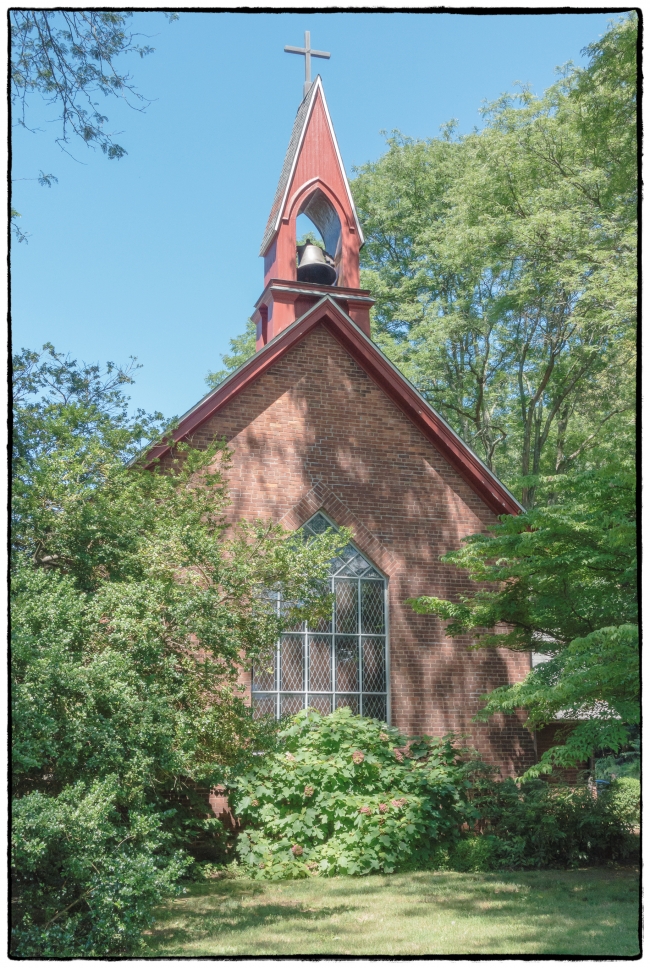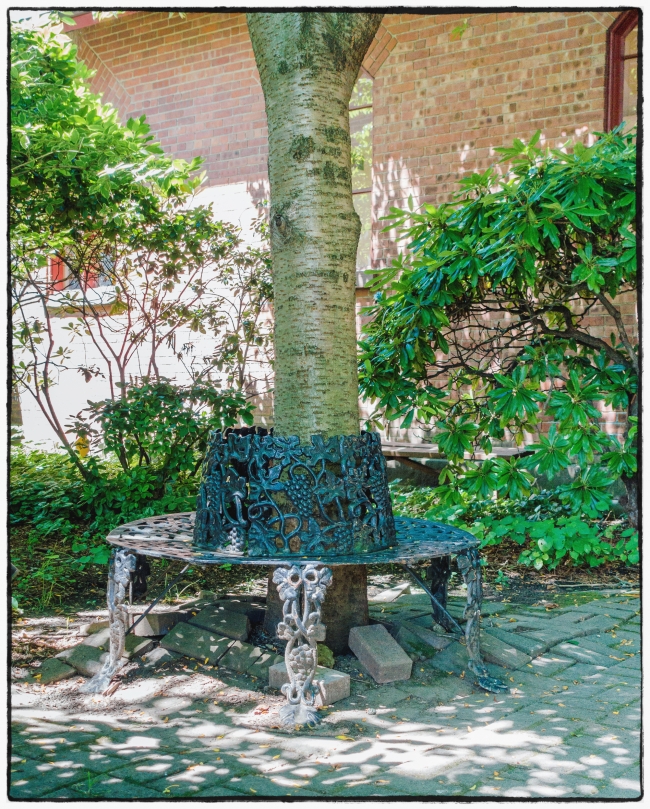Saint Augustine’s Church was formally organized in 1842. The first rector was Augustus Clarkson. The church as modeled on the Chapel of Christ Episcopal Church in Tarryton and was built in 1857 on land donated by Philip Van Wyck. Two additional buildings (the Parish Hall and vesting room were built in 1880.
Clarksons health deteriorated in 1904 requiring the church to be closed from 1905-1907, when it was reopened with the parish taking responsibility for the church finances. A new rectory was built in 1909. However, attendance declined and the parish had to apply to the Diocese for assistance. This situation continued until 1923 when it once again became independent. The problem continued and in 1926 the church again became an aided parish, this time for the next 24 years.
The population of Croton gradually increased and became more diverse and the church began to move away from the ‘low church’ favored by Clarkson towards a more ‘high’ church orientation. Not all of the parishioners were in favor of this change, which led to a number of physical changes in the church including the establishment of the Chapel of the Virgin Mary. Other modifications included a major renovation of the chancel and sanctuary.
Bad times came with The Depression and the Diocese was unable to help. Heating systems failed, a tree fell on the roof and the parish was unable to pay Father Young’s salary. By 1936 Sunday attendance had fallen to 25 people. By 1939 there was serious discussion regarding closing the church for a few months.
The church’s fortunes revived somewhat under Father Leeming (appointed 1941) and improved further under Father Garardus Beekeman (served 1947-1952) who was successful in rectifying the drastic state of disrepair and making the parish self supporting again. Sunday attendance increased to 125.
In the 1960s Sunday school attendance increased to a point where overcrowding became a problem. A new rectory was purchased a block away at the end of Van Wyck Street, and the old one was repurposed as the Sunday School.
By the 1970s financial problems again became an issue and the church once again became an aided parish (for 5 years), this situation continued throughout the 80s and 90s, with attendance again declining and the loss of a full time rector.
During the period 1996-2005 Father David Carlson the church’s fortunes improved. Membership surged and pledges increased. Initially Father Carlson was called “priest in charge” but evenutally his status as changed to “rector”. More renovations were undertaken and a new rectory was purchased.
The above is my own summary of a longer (but still quite short) A Brief History of Saint Augustine’s. I apologize for any mistakes I may have made in making this summary. The history concludes with these two paragraphs:
There are a number of themes that run through this history. One is surely the grit and determination of the congregation in the face of difficult challenges. This is a congregation that has faced terrible times financially and possible extinction as a congregation on several occasions, but there have always been people who were willing to work hard and keep the congregation going. A second is the willingness to embrace change. The church has responded positively to the need to rethink its organizational assumptions, to changes in the prayer book, to the changing role of women in the church, and to changing ideas about sexuality.
A third is a commitment to ecumenicalism. St. Augustine’s has been in the forefront of interfaith activities in the village since its inception. Closely allied to these characteristics are other historic hallmarks of this church: inclusiveness, joyful fellowship, concern for children, and a desire to play a role in the larger world through various forms of outreach. Finally, although it has not been mentioned in this brief history, the congregation has expressed itself by the effort it has put into beautifying the church buildings and grounds, the care it has devoted to its formal worship, and concern for its musical heritage
I find it sobering that the “high church”/”low church”) controversy continued as long as it did and found one paragraph in the history to be quite disturbing:
This [the move towards “high church”] was resented by many and was only gradually accepted. Although St. Augustine’s was firmly established as a high church by the end of Father Stewart’s ministry, the grumbling did not finally end until Father Armfield’s ministry in the 1960’s. The controversy was serious enough that in the climate of the Red Scare following World War I, the local Ku Klux Klan burned a cross on the hill across the Post Road from the church in condemnation of the “papish service of the Episcopal Church”.



